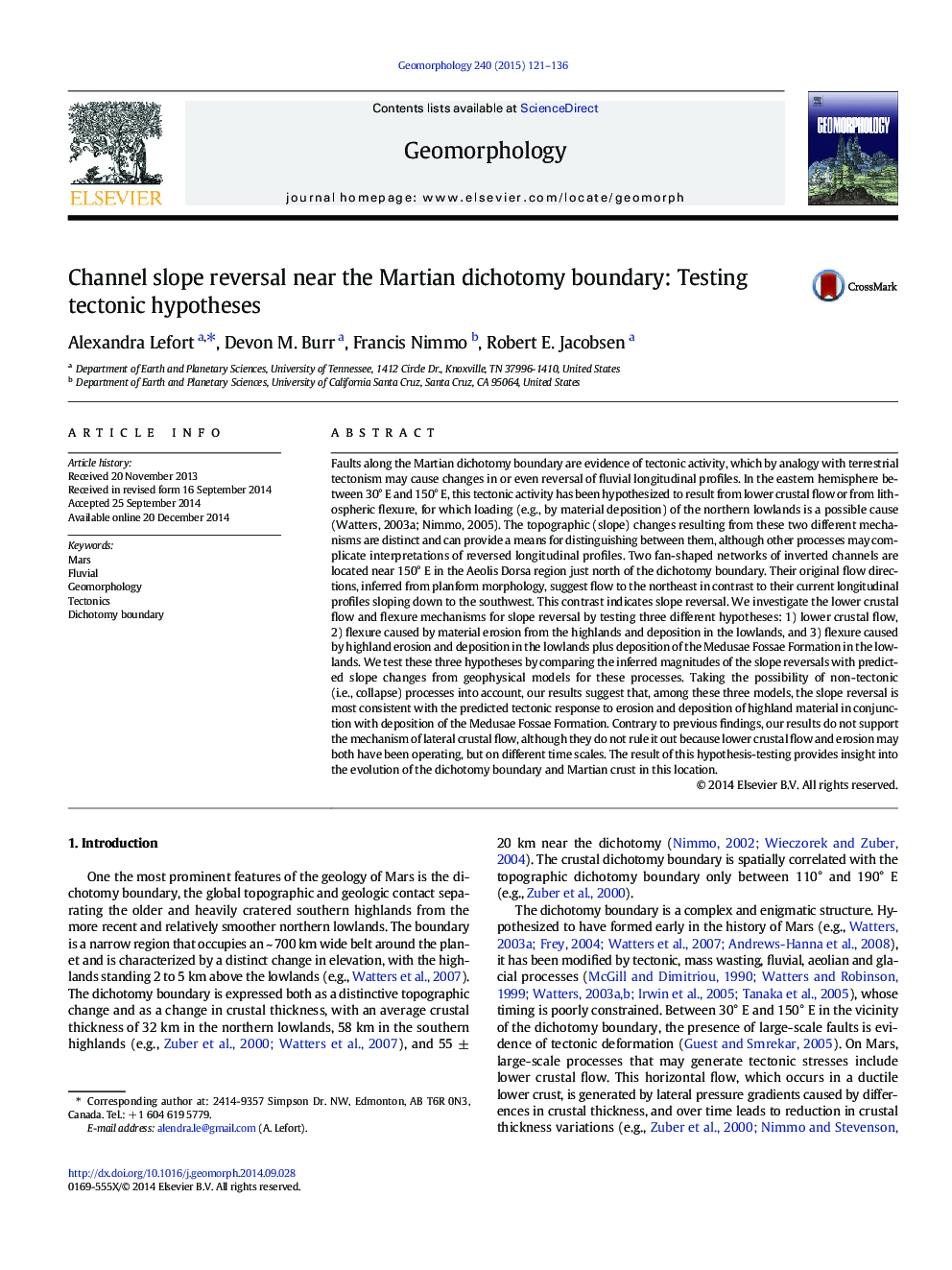| کد مقاله | کد نشریه | سال انتشار | مقاله انگلیسی | نسخه تمام متن |
|---|---|---|---|---|
| 6431892 | 1635409 | 2015 | 16 صفحه PDF | دانلود رایگان |
- The longitudinal profiles of two networks in Aeolis Dorsa suggest slope reversal.
- Slope reversal may be caused by tectonic processes.
- Lower crustal flow or erosion/deposition models may explain tectonic activity.
- Slope change predictions from each model are compared to measured slope change.
- The erosion/deposition model is the best match with the measured slope change.
Faults along the Martian dichotomy boundary are evidence of tectonic activity, which by analogy with terrestrial tectonism may cause changes in or even reversal of fluvial longitudinal profiles. In the eastern hemisphere between 30° E and 150° E, this tectonic activity has been hypothesized to result from lower crustal flow or from lithospheric flexure, for which loading (e.g., by material deposition) of the northern lowlands is a possible cause (Watters, 2003a; Nimmo, 2005). The topographic (slope) changes resulting from these two different mechanisms are distinct and can provide a means for distinguishing between them, although other processes may complicate interpretations of reversed longitudinal profiles. Two fan-shaped networks of inverted channels are located near 150° E in the Aeolis Dorsa region just north of the dichotomy boundary. Their original flow directions, inferred from planform morphology, suggest flow to the northeast in contrast to their current longitudinal profiles sloping down to the southwest. This contrast indicates slope reversal. We investigate the lower crustal flow and flexure mechanisms for slope reversal by testing three different hypotheses: 1) lower crustal flow, 2) flexure caused by material erosion from the highlands and deposition in the lowlands, and 3) flexure caused by highland erosion and deposition in the lowlands plus deposition of the Medusae Fossae Formation in the lowlands. We test these three hypotheses by comparing the inferred magnitudes of the slope reversals with predicted slope changes from geophysical models for these processes. Taking the possibility of non-tectonic (i.e., collapse) processes into account, our results suggest that, among these three models, the slope reversal is most consistent with the predicted tectonic response to erosion and deposition of highland material in conjunction with deposition of the Medusae Fossae Formation. Contrary to previous findings, our results do not support the mechanism of lateral crustal flow, although they do not rule it out because lower crustal flow and erosion may both have been operating, but on different time scales. The result of this hypothesis-testing provides insight into the evolution of the dichotomy boundary and Martian crust in this location.
Journal: Geomorphology - Volume 240, 1 July 2015, Pages 121-136
